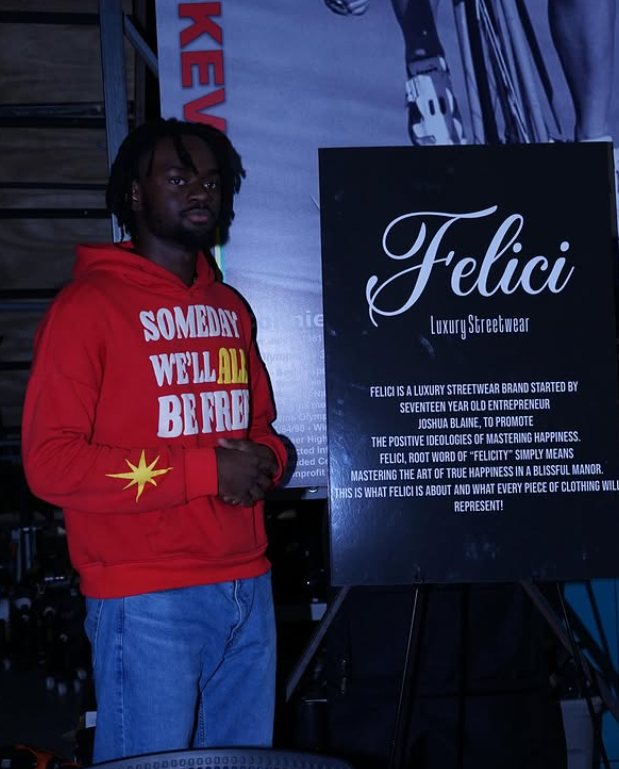On any given day, visitors at the Frederik Meijer Gardens & Sculpture Park stand in awe of the Garden Pavilion– an expansive room where portrait-like marble faces stretch across the room’s walls. These portraits comprise “Utopia,” an exhibition from Spanish artist Jaume Plensa. “Utopia” served as inspiration for a collaborative music and dance performance by students in Grand Valley State University’s New Music Ensemble and Dance Company on Feb. 25.
The collaborative performance titled “Utopia: A Music and Dance Ambient Experience” brought instrumental music and synchronized movement to the Garden Pavilion. The 82-minute musical piece was performed twice with four showings of the dance performance, allowing visitors to stop in and enjoy the performance at their leisure. The fusion of music, dance and the visual art of the space immersed performers and viewers in the atmosphere of the piece.
The four large portraits in “Utopia” were created specifically for Frederik Meijer Gardens by Plensa in 2020. With a different portrait on each wall stretching from floor to ceiling, the glowing white-marble faces display meditative expressions that symbolize humanity’s beauty. The white marble used to carve the faces was chosen for its subtle reactions to light and shadow.
The Garden Pavilion that houses the exhibit is flooded with natural light from the room’s skylight, which GVSU Director of New Music Ensemble Bill Ryan said was a major inspiration for the performance. Ryan said he spent considerable time in this space alongside Hannah Seidel, associate professor of dance at GVSU, in preparation for their collaboration. Ryan said his composition was largely inspired by the natural light, walled textures and the pavilion’s mingling visitors.
“I decided to create a composition that is an extension of the sculpture (“Utopia”),” Ryan said. “(It is) almost as if (the composition is) an audio version of the sculpture.”
Ryan said the performance’s composition was designed to provide the audience with a sense of relaxation through ambient and meditative instrumentals. Ryan described the composition as a “slowly shifting landscape of sound,” brought to life by the seven students in the ensemble. The instruments featured in the composition included a flute, oboe, clarinet, saxophone, cello, keyboard and vibraphone.
Alongside the musicians were 12 students in GVSU’s dance program who performed four variations of choreography ranging from 15 to 17 minutes in length. Seidel described the piece as modern contemporary mixed with a sustained presence. She said the choreography was intended to reflect the space and music surrounding them.
Seidel said she was drawn to the texture of the room, specifically the rough marble surrounding the smooth faces jutting out from the walls. When creating the choreography for this piece, Seidel said she wanted to include these textures within the dancers’ movements, and also incorporate the emotional pull of the message behind Plensa’s exhibit.
“I honed in on working with the ideas of comfort for this (performance) largely because of the presence of the natural light and the large scale of sculptures in that space,” Seidel said. “Comfort (was important) because there’s a beautiful humanity in the sculptures that I’m trying to bring out in the dancers as well.”
Additionally, Seidel said the meditative and vibrant rehearsal space allowed the dancers to explore movement through their own emotions and ideas. She said the choreography was a combination of her own movement and a “collaboration with the dancers.”
“They were very much involved in creating some of the movement,” Seidel said.
Seidel also said the choreography was particularly unique because it was performed differently across the four performance variations, creating a challenge for the dancers and a unique experience for the guests. Alaina Hogan, a GVSU student and dancer in the performance, said each set included four possible sections, leaving the dancers guessing as to which would come next.
“There is a level of spontaneity such that we never know exactly what is going to happen until it does,” Hogan said. “There is no set musicality. We stay together by watching each other and feeling each other’s energy.”
Though they performed alongside each other in the final piece, the GVSU New Music Ensemble and Dance Company had separate rehearsal sessions. Despite not having shared rehearsals, Hogan said she felt adequately prepared because she had become familiar with the composition in the weeks leading up to the performance.
On the day of the performance, the dancers and musicians arrived at the Garden Pavilions a few hours early to familiarize themselves with their new surroundings. Before performing, the dancers led with two performance rituals: a chant to build energy and a quick breathing exercise to calm nerves.
During the performance, the large room echoed the musical composition, enveloping the dancers and audience in sound. Hogan said this created a uniquely immersive experience that allowed the audience to join their “world” as active observers instead of passive viewers.
“While dancing, I feel the interpersonal connection between myself and the other dancers, which is reminiscent of the sculpture in the space that we are all connected (to),” said Hogan. “The reason why the audience is drawn to the piece is due to how it makes people feel rather than what it looks like.”
Hogan praised Seidel’s choreography and Ryan’s musical composition. She cited the harmonic synchronicity between the musicians and dancers as the reason for the performance’s success.
“Dancing to the composition is an ethereal experience,” said Hogan. “I feel like I am transported to another dimension.”











